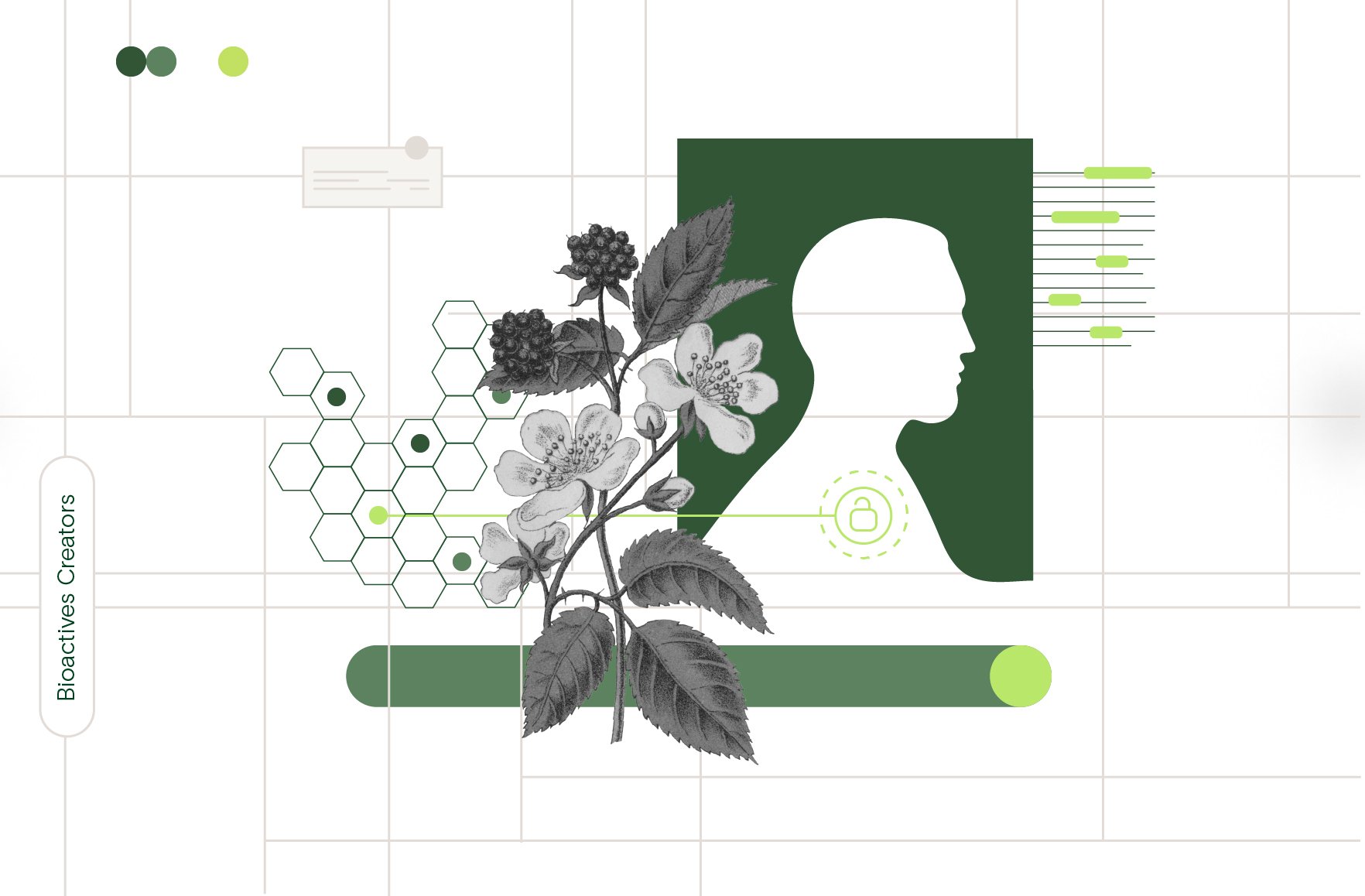December 20, 2022
Blog Post
What Are Bioactives?

Plants are brimming with a subset of tiny compounds known as bioactives (sometimes referred to as phytonutrients) that they produce to live, grow, and reproduce. Since plants and humans have co-evolved in many ways to benefit each other, these compounds can also activate receptors in the human body that boost health and wellness [1].
Consider caffeine—one of the world’s most beloved bioactives. When you drink caffeine in coffee or tea, the caffeine affects the adenosine receptor in your brain which helps you feel energized and focused [2]. Others, like antioxidants found in blueberries and broccoli, also bring biological benefits to humans. In fact, bioactives play a role in many areas of human health. More than two-thirds of the FDA’s approved medicines were originally derived from bioactives. From turmeric to aspirin to rapamycin, bioactives from nature have inspired modern biomedical research and are recognized as foundational to a modern, healthy diet rich in plants and vegetables.
But there’s a limit to how much we know about bioactives. Because of longstanding technical challenges in isolating and characterizing bioactive compounds, scientists have only been able to identify less than 1% of bioactives found in nature. And they know even less about other microbes like fungi and bacteria. This creates a powerful opportunity to deploy modern technology to find and unlock the potential of millions of new bioactives.
Our A.I.-powered platform, Forager®, allows us to drill deeper with a speed and accuracy that was previously impossible. Using advanced metabolomics research, science, and machine learning, Brightseed can isolate bioactives in plants, microbes, and fungi to study their precise biological impact on humans. From there, we can conduct scientific studies to verify their efficacy and then develop products that can be leveraged across a variety of applications such as pharmaceuticals, human food ingredients, supplements, and more. Already scientists have been able to confirm what traditional healers have known for millennia: solutions to human health can exist in nature. Take the bioactives in ginger, for example, which a published analysis of clinical trials identified may help to reduce inflammation and blood pressure by protecting the body’s DNA [3].
But there are thousands more (maybe even millions) to discover, possibly including bioactives that can support important human health areas like immune health, brain health, heart health, bone health, healthy aging, weight management, and so much more.
We’re at the start of a new era of plant exploration and a new frontier for human health, one that allows us to harness advances in technology to look deeper than ever before into the connection between nature and humans. Using the power of Forager, we can uncover more of these useful compounds and connect them to receptors in the human body that support well-being, health, and performance.
____________________________
1. Balick, Michael J., and Paul Alan Cox. Plants, people, and culture: the science of ethnobotany. Garland Science, 2020.
2. Cappelletti, S., Piacentino, D., Sani, G., & Aromatario, M. (2015, January). Caffeine: Cognitive and physical performance enhancer or psychoactive drug? Current neuropharmacology. Retrieved March 24, 2023, from https://www.ncbi.nlm.nih.gov/pmc/articles/PMC4462044/
2 Hasani, H., Arab, A., Hadi, A., Pourmasoumi, M., Ghavami, A., & Miraghajani, M. (2019). Does ginger supplementation lower blood pressure? A systematic review and meta-analysis of clinical trials. Phytotherapy research: PTR, 33(6), 1639–1647. https://doi.org/10.1002/ptr.6362
